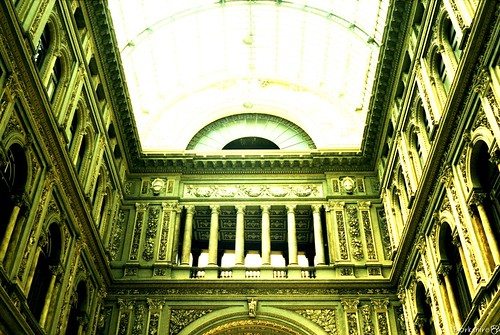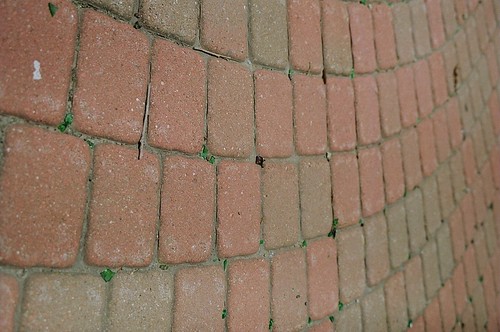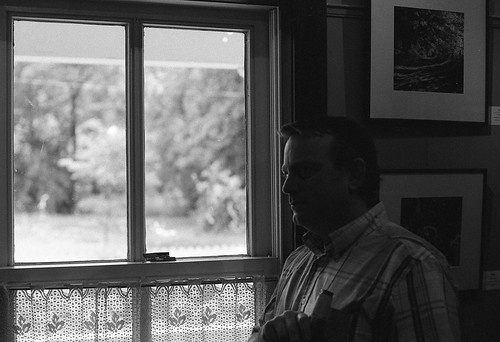Getting the film look from video has always been considered the "Holy Grail" for video directors.
The fact of the matter is that film will never look exactly like video and vice-versa (although new cameras and systems such as the RED are getting extremely close). They are two completely different things. 90% of making your video look like film happens before it comes into the camera.
However there are a couple of items to bear in mind when trying for the Holy Grail, 4 in fact.
The four items are:
1. Frame your shot well
2. Light your shot well
3. Use shallow depth of field
4. Shoot at 24FPS (or as near as you can).
If you can do these 4 things for every shot then you will have video that looks infinitely better than 99% of the stuff that appears on Youtube.
For a really interesting demonstration and discussion about 'film look from video' (or, more accurately, what is it that you have to do to make a film look like video), listen to the directors commentary of Cloverfield with Matt Reeves. He had the opposite problem in that he had professional cameramen who had to 'un-learn' what they knew to make the footage they shot look like it was amateur video
Frame Your Shot well
Well framed shots use what's know as 'The Rule of Thirds'. The theory is that if you split your frame into three both horizontally and vertically the action should occur where the lines meet.Putting the action at the intersection of the 'rule of third' lines creates a more interesting framing than putting it in the centre.
This applies to amateurs shooting video - if you're Spielberg shooting 'Saving Private Ryan' you can have as much extraneous movement as you want - even if it does make your audience sick
The other secret with framing is to make sure you only show the absolute minimum you have to in order to tell the story. Frame things as tight as you can. Don't have extraneous movement of the camera.
Light your shot well.
Lighting makes more difference to a movie than almost anything else (Actually sound makes a big difference as well), so make sure you use light properly. Look at Youtube and find a well shot film. Chances are the good shots are all lit in the same way. The subject is well illuminated and the scene looks like you would expect it to be in a film. This is through the use of creative lighting techniques (know as '3 point lighting') to isolate the subject, light the subject and provide a mood. A lot of this can be altered in post production, but there is no substitute for actually having good quality footage to start with.
Use Shallow Depth of field
One of the key differences between film and video is the use of focus. A shot which has the subject in sharp focus and the background blurred is automatically assumed to be more 'filmic' than one where everything is in focus (although this is not always the case as 'Citizen Kane' is a movie that has almost all the movie in ultra sharp focus at all points). This is known as depth of field.
Video cameras generally have a deeper depth of field (i.e more things in focus) because of a technical matter to do with the size of the chip that actually records the image. In a 35MM camera the effective area is larger than on a video CCD and therefore depth of field is more easily achieved.
If you want your image to have good depth of field there are ways to cheat this in video. One is simple, cheap and easy. The other is simple, expensive and complicated.
Quick, cheap and easy: Move your camera back and away from your subject, zoom the lens in and focus on the subject. This changes the framing and thereby gives the effect of blurring the background. It doesn't always work well, and it's not for every situation, but when it works it's very effective.
This has two effects:
1) It changes the composition of the photograph so that the picture may show something in the foreground that isn't there in the previous shot.
2) It appears to show that the background (and foreground object) are less sharp and more blurry than the subject of the photo. This is the shallow depth of field. In reality the depth of field is the same (all things being equal) it's just that it appears to be out of focus because of the way the perspective has changed.
Quick, expensive and complicated.
Use a 35MM adaptor. A 35MM adaptor is something put on front of your camera to fool it into thinking it is film rather than video. These adaptors are expensive, sometimes unwieldy and often produce upside-down images that need to be flipped in your editor.
Don't go thinking that a 35MM adaptor is not for your cheap video camera. They can be bought (or rented) for quite a few consumer camera's now.
Now's here the kicker. The rig attached to a cheap video camera costs well over the price of the camera itself. Some are cheaper, others are more expensive, but they are all extra bits that you need to carry around to get your picture looking 'filmic'. Oh, and they also reduce the actual amount of light reaching the camera's ccd chip so you'l need more light on your scene.
With a rig like this you can get good, shallow depth of field by using 35mm lenses in place of the 'not so excellent' one attached to your camcorder.
Use 24fps
Film is a medium which exposes an image to your eye 24 times per second. Your brain fills in the gaps and makes smooth motion of what you see.
For UK based folks have you ever wondered why news footage from the US looks 'different' to news footage from here? One reason is the different colour system they use (PAL vs NTSC), but another is the different frame rates
Video - being electronic based - is constrained quite a lot by the frequency at which the circuits are being used. This means that UK based video's take 25 frames per second (FPS) and US based video's take 29.97 frames per second (don't ask!).
The resulting image is very much different. Movement is sharp and 'strobe like' and your brain interprets it differently.
However there are cameras on the market now that have a 24 frame-per-second ability. These are the ones that need to be used for getting the film look from video. Actually UK users can stick with 25fps because the 4% difference is almost unnoticeable.
And make sure, if at all possible, that you capture this non-interlaced. Basically the general rule is 'if you can capture it non-interlaced (or progressive) it will make your footage look better.
Summary
Note that at no point have I talked about manipulating your footage in an editor, nor have I talked about esoteric items such dynamic range and colour spaces. These are all technical items that deal with how the image is processed when it comes out of your camera. All I've covered so far is how to focus on key items to get the film look from video.
It doesn't matter what you do with your footage once it hits the editing table (whether you use free editing software or converters from one format to another) it will still look like video if it is badly framed, badly lit and has deep focus.
Gary Comerford runs the Free video editing website at http://www.free-video-editing.com/ez
The site has links to and reviews of Linux, Mac and PC software devoted to video editing, special effects, video conversion and DVD creation, as well as tutorials and other editing related items. It's also the place to find out all about the tools mentioned in this article.
Why not subscribe to the ezine http://www.free-video-editing.com/eza to be kept up to date in this fast moving area of software?








